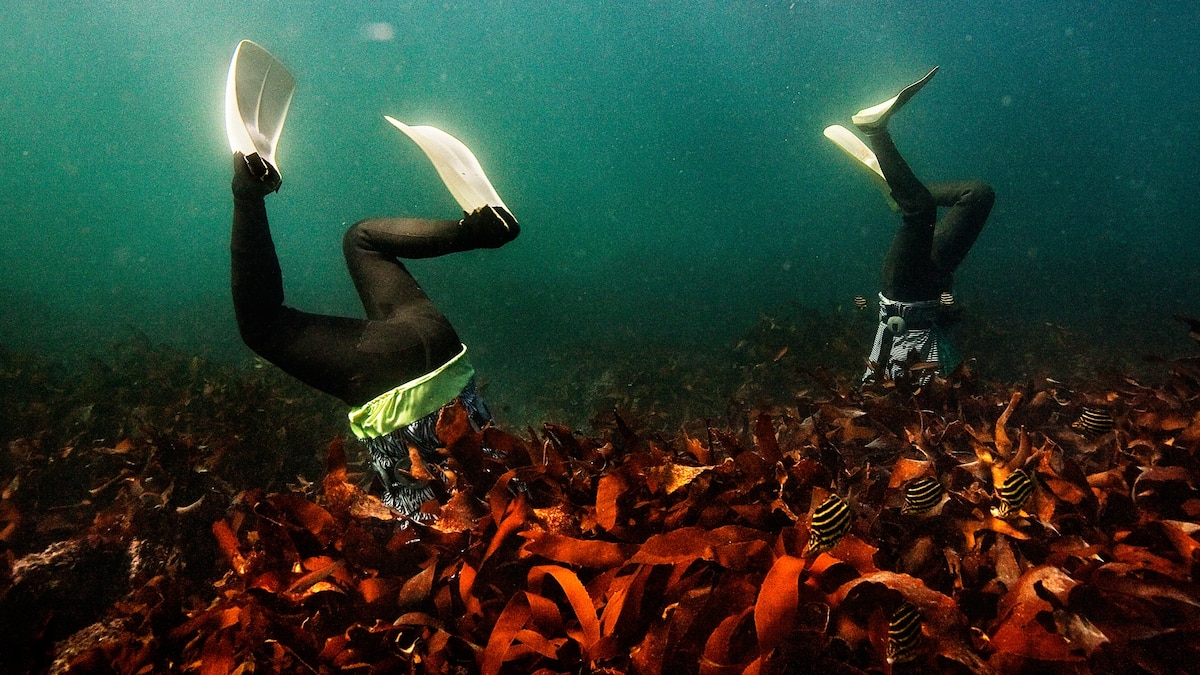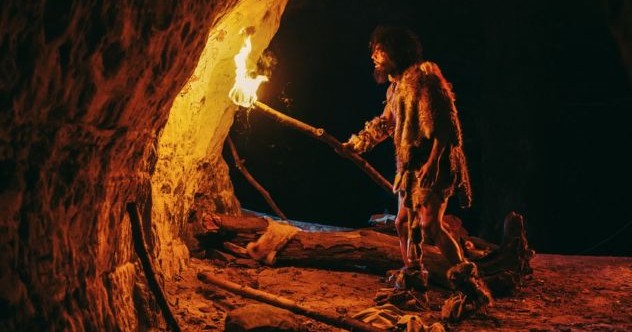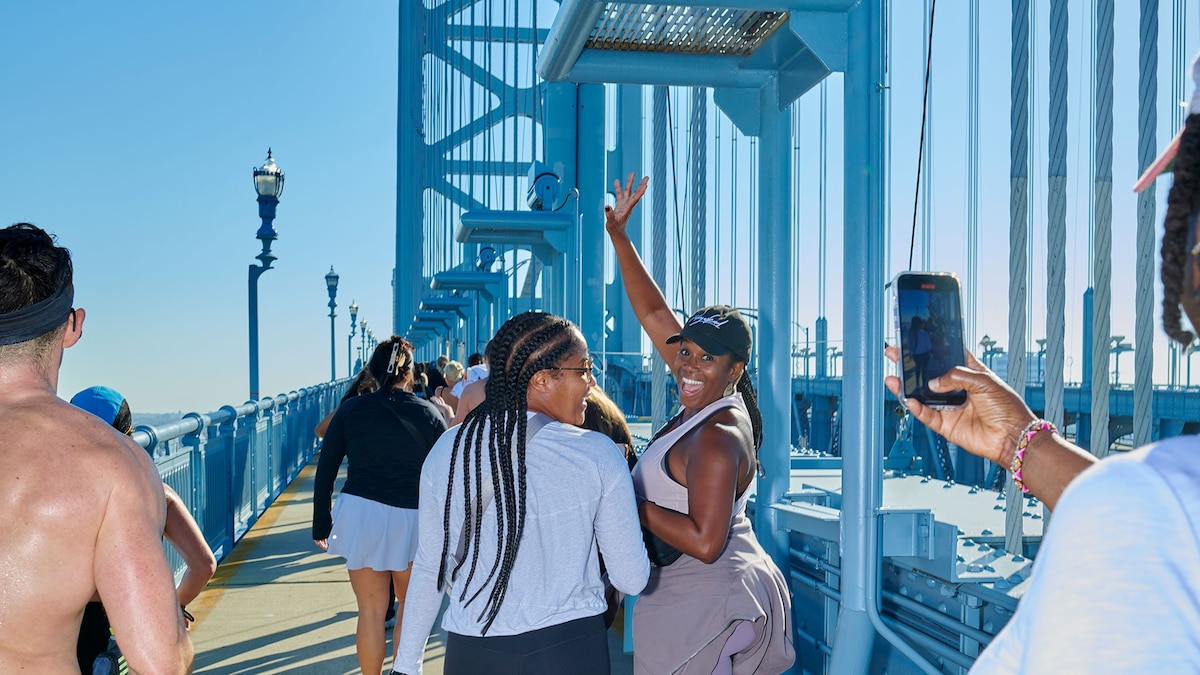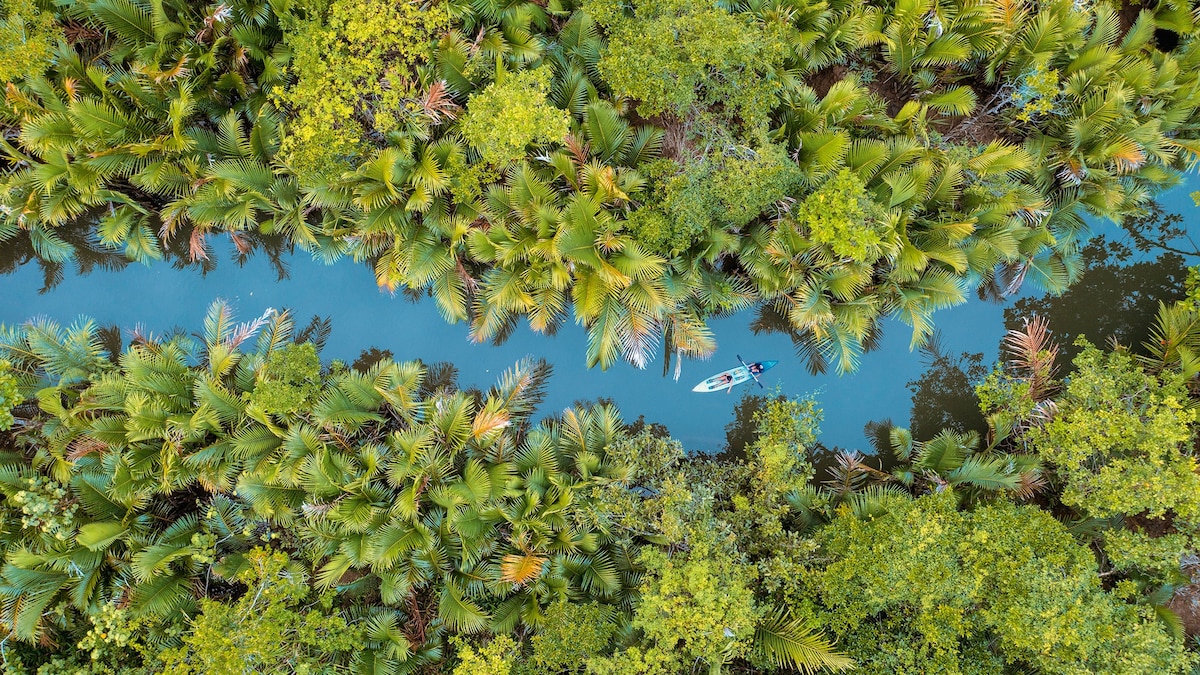Now Reading: These Korean women divers have evolved traits to survive in frigid water
-
01
These Korean women divers have evolved traits to survive in frigid water
These Korean women divers have evolved traits to survive in frigid water

A group of women around 70 years old laugh and sing on a beach in Jeju, an island off South Korea, preparing to spend the day diving for shellfish. Moments later, they’ll plunge into frigid waters as cold 50°F, diving down as deep as 32 feet and gathering their catch from the sea floor before quickly ascending. They’ll do so without oxygen masks, diving and resurfacing for as long as five hours a day.
“They now wear wetsuits, but up until the 1980s they were diving in these cotton bodysuits,” says Melissa Ilardo, geneticist at the University of Utah, who has been working with these women.
Called the Haenyeo, these divers carry on a matrilineal tradition of diving, even while pregnant.
Their impressive abilities are due partly to lifelong training that allows them to hold their breath for long dives in cold waters.
But generations of this diving practice may have also changed the genetics of these divers and their children, passing down physiological adaptations that allow them to dive safely, according to a new study in Cell Reports.

The genetic variations found in this group of Jeju Island divers is just one more piece of evidence showing humans can adapt to extreme conditions.
Photograph by David Hogsholt
Women of the sea
The Haenyeo, a name that means “women of the sea” in Korean, dive in groups year-round to harvest shellfish like abalone and sea urchin for their communities.
These women often learn to dive with their mothers from a young age, but begin officially training around age fifteen, says Ilardo, and continue throughout their lives.
“They have this really amazing relationship with the sea, where they’re custodians of the sea, they really take care of the marine environment,” says Ilardo, adding that Haenyeo divers rotate what they collect based on the season, allowing time for resources to regenerate.
This matrilineal tradition is not as popular with the younger generation. Current divers are around 70 years old on average and possibly the last generation of Haenyeo divers, which means the window to study these genetic traits may be closing. Ilardo says diving on Jeju has likely been happening for thousands of years, although it’s unclear when exactly it shifted to only women.

A diver from Jeju Island: a Haenyeo (woman of the sea) photographed circa 1954. Some historians think diving on the island goes back around 1,700 years.
Photograph by Universal History Archive/Universal Images Group/Getty Images

A statue honors the long-standing Korean tradition. In 1950, there were as many as 30,000 Haenyo on the island, in 2003 there were only 5,650 sea women registered as divers, of whom 85 percent were over 50 years old. This might be the last generation of Haenyo women in Korea.
Photograph by Giulio Di Sturco, contrasto/Redux
Adaptation at the extremes
Human bodies can adapt and acclimate to tolerate extreme conditions like high altitudes and freezing temperatures.
“Humans are super plastic, we live everywhere,” says Joshua Tremblay, cardiovascular researcher at the University of British Columbia, who was not involved in the new study. “We’ve done such a good job of not just behaviorally or culturally adapting, but also physiologically adapting.”
In her work with reindeer herders in Finland frequently exposed to extreme cold, Cara Ocobock, anthropologist at the University of Notre Dame who was not involved in the new study, has found that their bodies tend to have more of a type of fat specialized for conserving heat.
Some populations living at high altitudes have physiological and genetic adaptations to relatively low atmospheric oxygen levels, says Tremblay. But those adaptations vary—people living in the Andes have adapted by producing more red blood cells, while in Tibet adaptations may be more focused on hemoglobin concentration, both of which allow them to carry more oxygen in the blood.
The diving Bajau “sea nomads” of Indonesia have developed larger spleens, which increase red blood cell circulation and oxygen during dives, according to a paper Ilardo published in 2018. It was this finding that let her to study whether Haenyeo divers had similar adaptations, collaborating with Joo Young Lee at Seoul National University, who had worked with the Haenyeo for over a decade.
(Learn more about Bajau sea divers.)
You May Also Like
Testing a diving superpower
Ilardo and her team compared 30 Haenyeo divers’ genomes to the genomes of 30 non-Haenyeo people from the island of Jeju, as well as 31 people from mainland Korea. The average age of all participants was 65. All participants also underwent simulated dives, where they submerged their faces in tubs of cold water while holding their breath.
The Haenyeo’s heart rates dropped about 50 percent more during simulated dives compared with the other groups, which helps them hold their breath longer by limiting oxygen that the body needs and reducing the work the heart needs to do. The researchers theorize this feature is a result of the divers’ lifelong training.
“The heart rate difference was really dramatic,” says Ilardo. “We had one individual whose heart rate dropped over 40 beats per minute in 15 seconds.”
(Learn more about how scientists are studying human superpowers.)
Genomic analysis also showed residents of Jeju, both divers and non-divers, were genetically distinct from the participants from mainland Korea. Jeju’s residents have likely descended from a small ancestral population, according to Ilardo, and isolated from the mainland for a long time: Ilardo notes there were periods in history when people weren’t allowed to enter or leave the island.
Of the participants from Jeju, 33 percent, compared with only seven percent of participants from the mainland, had two gene variants that could help the body cope with the pressures of diving. One of the variants is associated with cold tolerance, which would make divers less vulnerable to hypothermia. The other variant is associated with reduced diastolic blood pressure.
This blood pressure genetic variant can protect the Haenyeo as they dive while pregnant—typically, pregnant Haenyeo will dive up until the day they give birth, says Ilardo. The researchers suggest this lower blood pressure genetic variant could protect against complications like preeclampsia, a health risk for pregnant women that can be exacerbated by diving.
“It’s a really stressful thing on your body,” Ilardo says of diving in cold water, “and we think that this genetic variant may protect them through its role in how it affects blood vessels… reducing the risk to the mother and to the child.”

Once submerged, women dig around on the ocean floor for shellfish. They sometimes work as deep as 65 feet below the surface, pushing the limits of human endurance.
Photograph by David Hogsholt
Adapting to a changing world
This study makes the Haenyeo the second known population that seems to have evolved for diving, in addition to the Bajau.
“It’s an awesome demonstration of human variation, evolution, and flexibility,” says Ocobock.
The genetic variation that many Jeju residents have might not just help with diving, says Ilardo, but may also be linked to the fact that Jeju has the lowest stroke mortality in all of Korea.
“It would be really amazing if these women diving through pregnancy, like the bad asses that they are, is actually driving this health phenotype that affects the entire island,” says Ilardo, who adds that better understanding how this gene variant works could inform cardiovascular health treatments.
Exploring the ways human bodies adapt and acclimatize to extreme conditions is also important in the face of climate change, says Ocobock, given warming and increasing extreme weather events like ice storms and heat waves.
“Better understanding the capacity for human bodies to deal with and mitigate these extremes is only going to make us better prepared for what is upon us right now,” says Ocobock.























